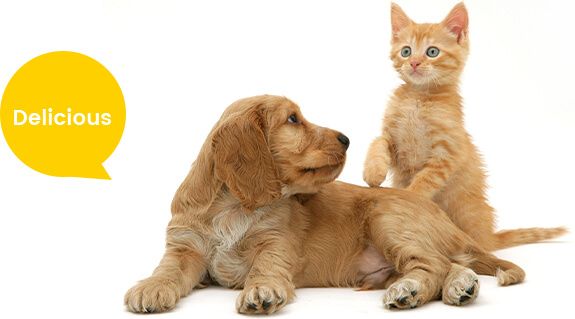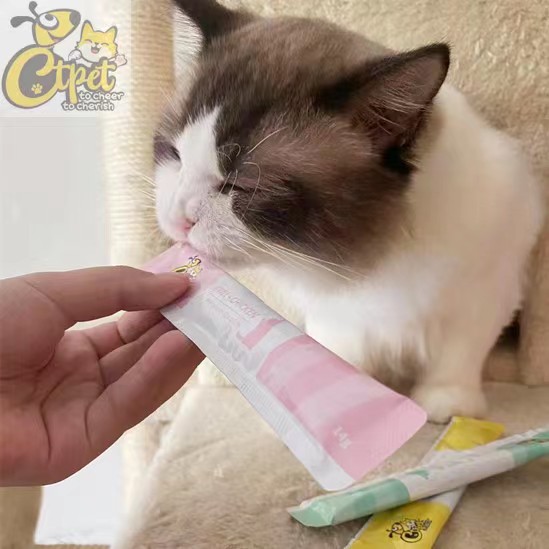
Want to hear from us?
Sign up to receive our latest email news, offers and updates.
News and Events
August 16, 2022Digestive differences between dogs and cats
Dogs and cats are mammalian carnivores. Their intestines are relatively short. The digestive juices secreted by the gastrointestinal tract are conducive to digestion and absorption of animal muscles and bones. Dogs and cats can digest and absorb 90%-95% of animal fresh meat and internal organs. It can only digest and absorb 60%-80% of vegetable protein.
1. Dogs become omnivores mainly carnivorous after domestication. Dogs have a poor sense of taste, eat quickly, and rely on a sensitive sense of smell to distinguish whether the food is fresh or spoiled; each has a pair of sharp canine teeth on the upper and lower jaws, which are used to bite the food; The intestinal tract is short, only 3-4 times the body length, and the ability to digest crude fiber is poor.
2. Cats have well-developed canine teeth, and their sense of smell is quite sensitive, but not as good as dogs. There are various nipples on the tongue surface of cats. The tip of the nipple at the front of the tongue is tooth-like and can lick the meat attached to the bone.
3. The length of the digestive tract of dogs and cats is different, but other aspects are similar.
4. The biggest difference between the gastrointestinal tract of dogs and cats is that the pregastric mucosa of dogs is relatively thin, with obvious gastric glands, and the gastric tail mucosa is thicker, but the gastric glands are not obvious. Compared with canines, felines have a uniform gastric mucosa.
5. Comparative studies of canine and feline digestion have shown that dogs and cats are closely related in terms of gut properties, natural wild foods, and nutritional needs. Cats originate from a completely carnivorous family of animals (felines), while dogs are omnivorous.
Nutritional needs of dogs and cats
1. Carbohydrates
Dogs need more carbohydrates than cats. The cat's digestive organs are unable to digest complex carbohydrates, and cats continue to make glucose in the body by utilizing protein. As a result, blood sugar increases when carbohydrates ingested through the diet are absorbed by glucose, so cats take care to avoid excess carbohydrates. Maintaining the carbohydrate ratio in the diet below 36% (DMB) can prevent feline diabetes.
2. Protein (Amino Acids)
Animals can make some amino acids themselves, called non-essential amino acids. In contrast, essential amino acids must be provided by the diet. Cats have 12 essential amino acids, while dogs have only 11. Cats also need more protein in their diet; kittens need 1.5 times more protein than puppies; adult cats need 2 to 3 times the amount of adult dogs.
The following amino acid protein requirements are lower for dogs than for cats:
---Taurine: Unlike dogs, cats cannot produce taurine by themselves and must be supplemented or supplemented with food. Taurine is an essential amino acid for cats, but not for dogs. Cats that don't get enough taurine in their diets end up blind, deaf and can develop heart failure.
---Ornithine: Most animals, including dogs, can consume ornithine in a variety of ways, while cats get it through arginine. (Cats and dogs cannot produce arginine on their own and must be supplemented through food)
3. Essential fatty acids
Essential fatty acids are nutrients that cannot be synthesized in sufficient amounts in pets and must be obtained through food. Arachidonic acid is an essential fatty acid that cats cannot make, but dogs can make. Dogs use linoleic acid to synthesize arachidonic acid, so sufficient linoleic acid can solve the lack of arachidonic acid. However, since cats cannot synthesize arachidonic acid, supplementation with linoleic acid and alpha linolenic acid is required to consume arachidonic acid.
4. Vitamins
Vitamins are organic molecules that, in very small quantities, act as regulators. With few exceptions, they cannot be synthesized in the body and must therefore be obtained from food sources or through supplementation. Vitamins are considered essential for life. Vitamins are easily inactivated by oxidation (contact with air) and other chemical reactions accelerated by light, heat, acids or bases. Therefore, many of the natural vitamins in food are destroyed by most food processing, long-term storage, open containers and moisture.
Vitamins are divided into two categories:
fat-soluble vitamins - vitamins A, D, E and K;
· Water-soluble vitamins - B vitamins and vitamin C.
The important thing to know about this is that water-soluble vitamins can exceed recommended requirements because they are easily broken down and excreted in the urine. Fat-soluble vitamins are stored in body organs such as the liver. Overdose of these vitamins over a period of time can reach toxic levels with serious consequences for pets' health.
The full spectrum of B vitamins is important for fertility and preventing birth defects. It is important to give all B vitamins in balanced doses as they compete with each other for absorption in the small intestine.
Knowing the differences in digestion and nutritional needs of dogs and cats, we can better provide staple food and snacks for cats and dogs. CTPET's lickable creamy cat bars focus on adding taurine and probiotics. There are five flavors to benefit cats healthy!

Keyword: chaotai pet, ctpet, dog dental snacks, dog oral chews, dog oral healthy, dog dental care, dog treats, ctpet, China factory OEM cat treats and dog treats, label private manufacture
If you wanna get more knowledge about dog treats, cat treats, dog dental snacks, rawhide dog treats, welcome to visit ctpet food website: www.ctpetfood.com, www.ctpetfood.cn, www.chaotaipet.com
Welcome to contact Milyzhang: mily@chaotaipet.com
whatsapp: +86 138 548 07847

Want to hear from us?
Sign up to receive our latest email news, offers and updates.
